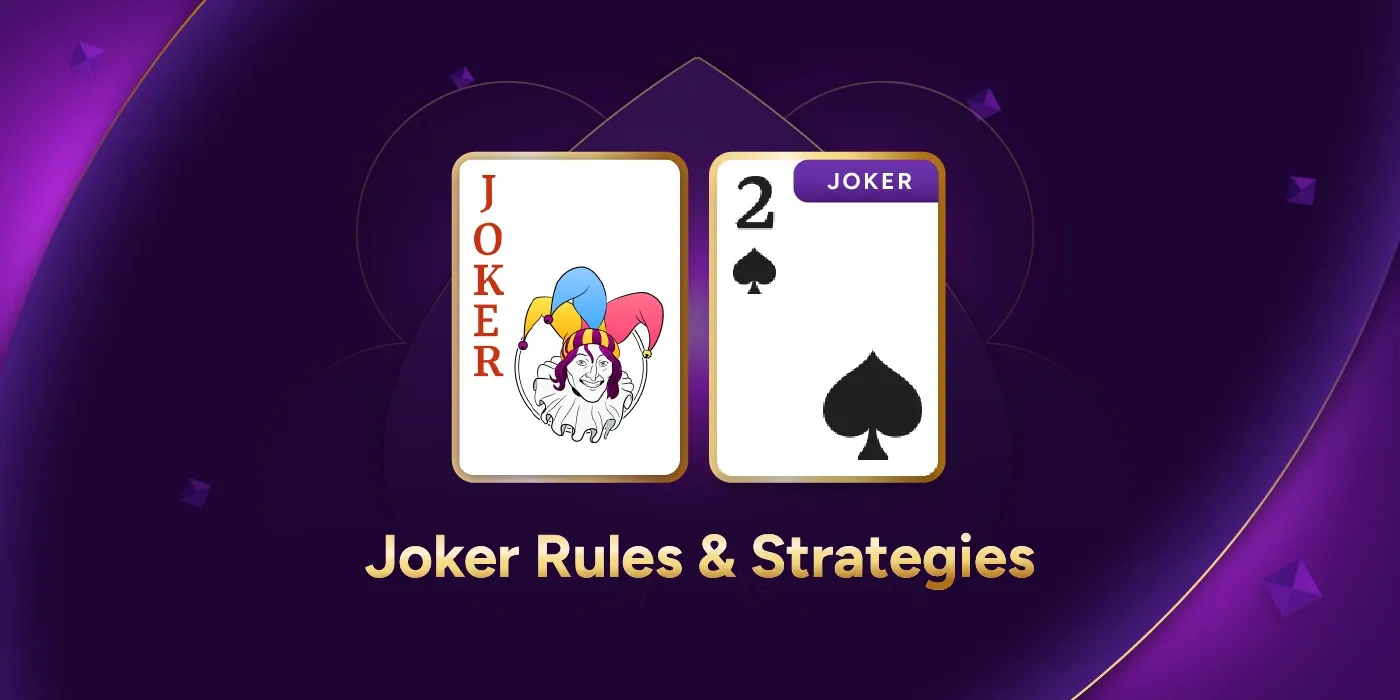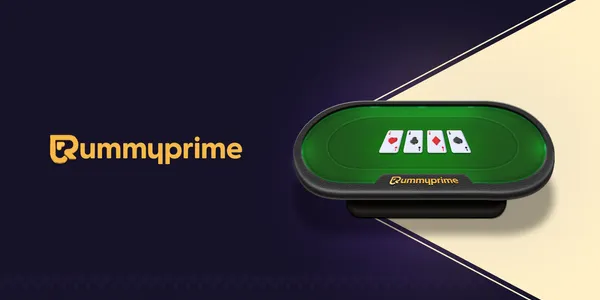- Home
- Rummy World
- Joker in Rummy: Rules, Strategies and Tips
Joker in Rummy: Rules, Strategies and Tips
The joker card plays a vital role in rummy, acting as a wild card that can substitute for any missing card in a set or an impure sequence, making it easier to complete valid hands.
Rummyprime Elite Editors | 19th Mar, 2025

Joker in Rummy
Rummy is a traditional Indian card game whose main objective is to form valid sets and sequences using the cards that are dealt. A ‘Set’ consists of three or four cards of the same rank but different suits (Example: 7♠ 7♦ 7♣), while a ‘Sequence’ is a consecutive grouping of three or more cards of the same suit (Example: 4♥ 5♥ 6♥). To win, a player must create a valid combination of sets and sequences from 13 cards, with at least one pure sequence – a sequence without a joker.
The joker card plays a vital role in rummy, acting as a wild card that can substitute for any missing card in a set or an impure sequence, making it easier to complete valid hands. There are two types: printed jokers (actual cards with the joker design), and wild jokers (randomly selected cards from the deck at the start of the game). Strategic use of joker cards can help players to quickly make valid combinations and declare the game.
What is a Joker in Rummy?
Joker cards are used in rummy as substitutes for missing cards. These cards play a vital role by helping in completing sets or sequences by replacing the missing cards. But, it is important to know that one pure sequence – a sequence without a joker – is a must to win a game of rummy. There are two types of jokers: printed jokers and wild card jokers, as explained below:
| Feature | Printed Joker | Wild Card Joker |
| Identity | Actual cards with the joker design | Randomly selected cards at the start of the game. |
| Number in deck | Fixed (Usually two per deck) | Varies based on the selected card’s rank |
| Role in game | Acts as a substitute for missing cards | Acts as a substitute for missing cards |
| Existence in other suits | No variations | All cards of the chosen rank across suits become wild card jokers. |
Joker Rules in Rummy
The use of Jokers in rummy depends on the specific variant being played. Below we will try and explain in detail, how the jokers can be used, including placement, rules and restrictions.
General joker rules in rummy:
- A joker (wild card) can be used as a substitute for any missing card in a set or sequence.
- The joker can be either:
- Printed Joker (the actual designed joker card in the deck)
- Wild Card Joker (a randomly chosen card at the start of the game)
Must read: Rummy Game Rules
Joker rules in different rummy variants
- Indian Rummy (13 and 21 card rummy)
Valid Uses:
- Can replace any missing card in a sequence or set.
- Can be used to make an impure sequence (a sequence that is made using a joker).
- Can be used to complete a set (three or more cards of the same rank but different suits.
Restrictions:
- At least one pure sequence (without a joker) is mandatory to make a valid declaration.
- More than one joker can be used to complete a set but not in a pure sequence.
Examples:
- Pure Sequence (No Joker): 4♠ 5♠ 6♠
- Impure Sequence (With Joker): 8♦ 9♦ (Joker) (the joker acts as 10)
- Set: K♣ K♦ (Joker) (the joker here is another K)
Also read: 13 Card Rummy
- Gin Rummy
Valid Uses:
- Typically jokers are not used in Gin rummy, unless the players have agreed to play a house rule variation.
- If the usage is allowed, they act similar to normal rummy wild cards. These jokers can be used to replace missing cards in a combination.

How to Use Jokers Wisely in Rummy?
Sets: In rummy, jokers or wild cards help complete sets by substituting for missing cards. A set consists of three or more cards of the same rank but different suits.
Example: 8♦ 8♠ J (set completed with a joker)

Sequences: In rummy, jokers can be used to complete sequences by replacing a missing card in the sequence. A sequence is three or more cards of the same suit in consecutive order. Do note, that a pure sequence is a must to make a valid declaration, this is to ensure fairplay and restrict over reliance on jokers to form combinations.
Example: 5♠, J, 7♠ (the joker acts as 6 of spades here)

When NOT to Use Jokers in Rummy?
- Pure Sequence Priority: A pure sequence (without a joker) is mandatory in rummy to make a valid declaration. If you use jokers to complete all your sequences, it will be considered as invalid and you will lose the game.
- Avoid Joker Dependence: Relying too much on jokers might limit your ability to make natural sequences or high-value sets, this might weaken your overall strategy when points are in play.
- Risk of Holding Too Many Jokers: Excess jokers might not be useful, if they are not contributing to valid sets and sequences. Holding them for too long might weaken your strategy and leave you with unplayable combinations.
Tips to use the Joker in Rummy
Joker cards or wild card jokers play a strategic role in rummy games. They are used to complete sets and sequences when players don’t have the exact cards. Given below are a few tips on using the joker:
- Prioritize forming a pure sequence first
First and foremost, to win a game of rummy a pure sequence is a must to make a valid declaration. A pure sequence is one where there are no jokers used in the combination. This should be a high priority when trying to win a game of rummy.
- Pair the joker with high-value cards
Pairing the joker with high-value cards is essentially a strategic move. This can minimize your points in case of a loss. High-value cards like the Ace, King, Queen and Jack carry 10 points each. If they remain ungrouped and the opponent has declared, the penalty points will be very high.
- Discard the joker when necessary
The joker can be used in a different way to just completing combinations sometimes. A discard joker cannot be picked by the opponent. So, in case you are trying to block the opponent from making a particular combination, you can drop the joker in the discard pile.
- Utilize the joker to create an impure sequence
The joker is there to substitute for cards you don’t have. So, while building a sequence if you are missing a particular card in the order, you can replace it with a joker to make an impure sequence. Example: 8♦ 9♦ J (the joker acts as 10)
- Use the joker to complete sets
Similar to the impure sequence, jokers can be used to complete sets by replacing the missing card. Example: K♣ K♦ J (the joker here is another K)
- Avoid using the joker as the fourth card in a set
In rummy, a set can be completed with three cards, so using a joker as a fourth card is considered a waste when it can be better utilized to make impure sequences.
Check more: Pure Sequence vs. Impure Sequence
FAQs on Jokers in Rummy
1. How many jokers are there in a Rummy game?
2. Can I use a joker in a pure sequence?
3. Can I discard a joker in Rummy?
4. How do jokers affect the points calculation in Rummy?
5. Are jokers allowed in every version of Rummy?
Featured Articles



